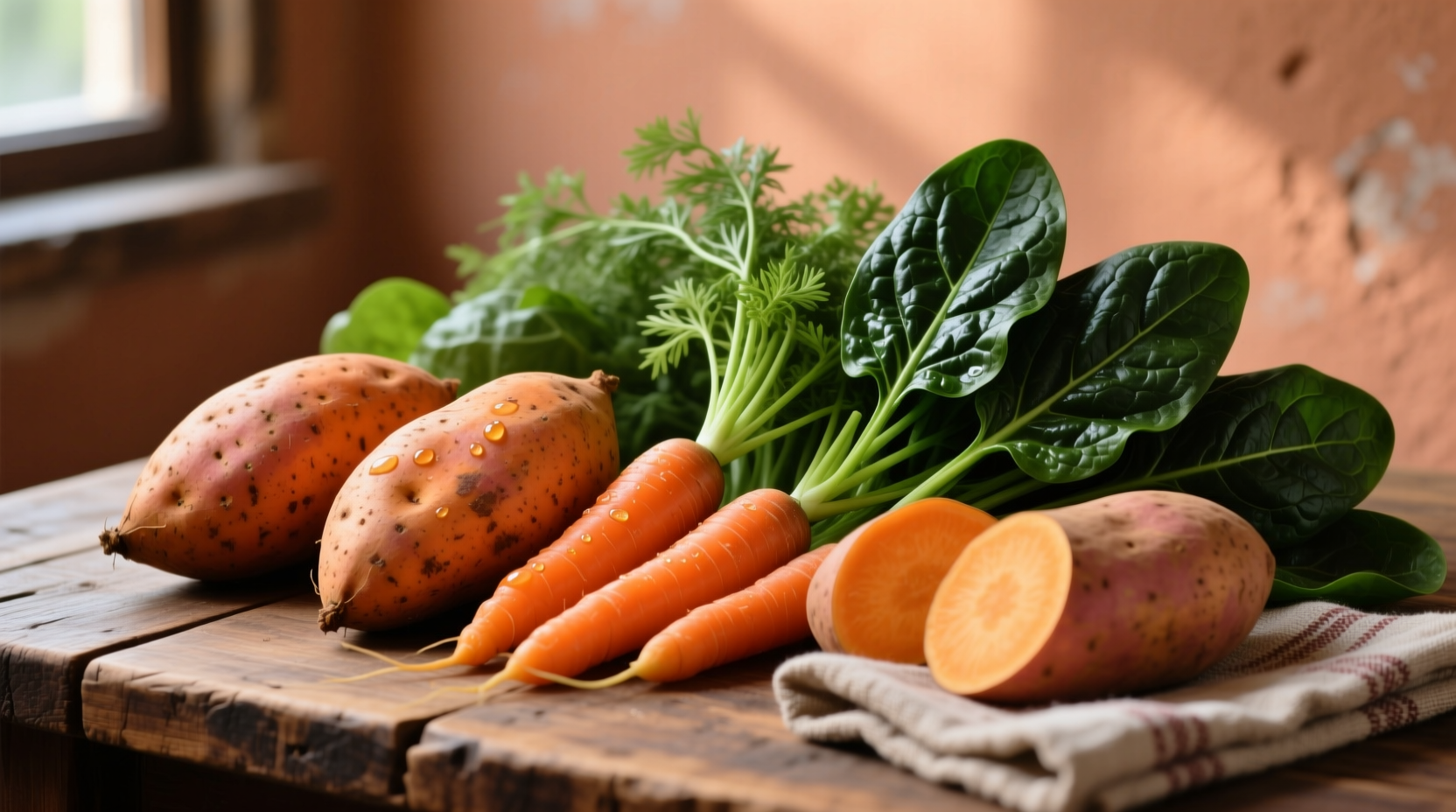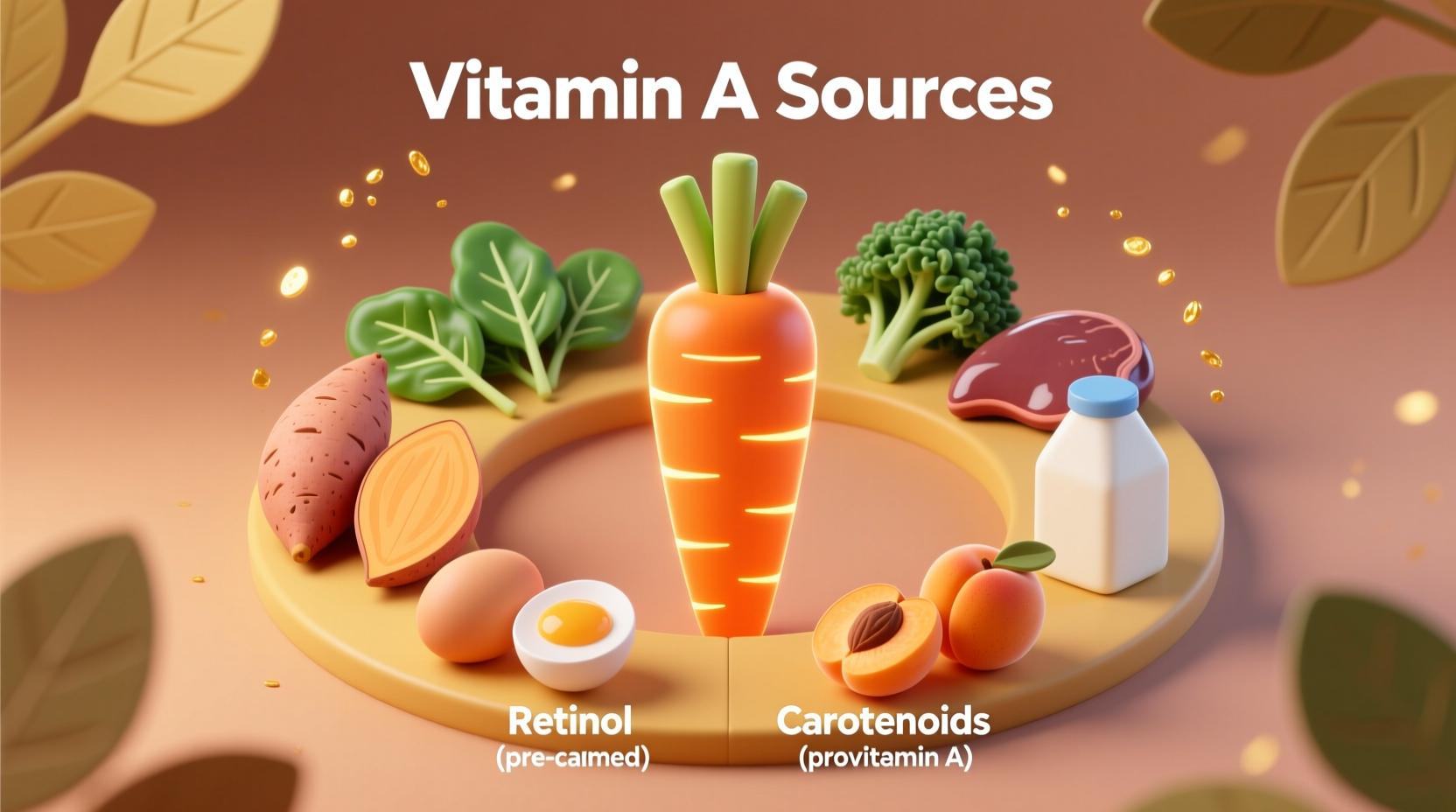Discover exactly where to find this essential nutrient in your daily diet with our comprehensive guide to natural vitamin A sources. Whether you're planning meals for optimal health, addressing specific dietary needs, or simply curious about nutrition, this guide delivers practical, science-backed information you can use immediately.
Why Vitamin A Matters for Your Health
Vitamin A plays critical roles in maintaining healthy vision, supporting immune function, and promoting cell growth. According to the National Institutes of Health, this fat-soluble vitamin exists in two main forms in foods:
- Preformed vitamin A (retinol) - Found in animal products and readily usable by the body
- Provitamin A carotenoids - Primarily beta-carotene found in plant foods, which the body converts to active vitamin A
The conversion process varies significantly - it takes approximately 12 micrograms of beta-carotene to produce 1 microgram of retinol activity equivalents (RAE), making animal sources more concentrated in usable vitamin A.
Top Animal Sources of Vitamin A
Animal-based foods provide preformed vitamin A (retinol) that your body can use immediately without conversion. These sources deliver the most concentrated forms of vitamin A per serving:
- Liver and organ meats - Beef liver contains a staggering 6,582 mcg RAE per 3-ounce serving (731% of daily value)
- Fish and fish oils - Cod liver oil provides 1,350 mcg RAE per teaspoon
- Egg yolks - One large egg contains 75 mcg RAE (8% of daily value)
- Full-fat dairy products - Whole milk (149 mcg RAE per cup) and butter contain significant amounts
For those following paleo or carnivore diets, these animal sources provide the most efficient vitamin A intake. However, pregnant women should monitor liver consumption due to potential vitamin A toxicity concerns.
Best Plant-Based Vitamin A Foods
Plant foods deliver provitamin A carotenoids, primarily beta-carotene, which your body converts to active vitamin A. While less concentrated than animal sources, these options are essential for vegetarians and vegans:
- Sweet potatoes - One medium sweet potato provides 1,403 mcg RAE (156% of daily value)
- Carrots - One raw carrot contains 835 mcg RAE (93% of daily value)
- Spinach - Half cup cooked spinach delivers 573 mcg RAE (64% of daily value)
- Kale - One cup cooked kale provides 443 mcg RAE (49% of daily value)
- Red bell peppers - One medium pepper contains 157 mcg RAE (17% of daily value)
Consuming these foods with healthy fats significantly enhances absorption. A study published in the American Journal of Clinical Nutrition demonstrated that adding avocado to a carotenoid-rich salad increased beta-carotene absorption by 8.4 times.
| Food Source | Serving Size | Vitamin A (mcg RAE) | % Daily Value |
|---|---|---|---|
| Beef liver | 3 ounces | 6,582 | 731% |
| Sweet potato | 1 medium | 1,403 | 156% |
| Carrots | 1 medium | 835 | 93% |
| Spinach (cooked) | 1/2 cup | 573 | 64% |
| Whole milk | 1 cup | 149 | 17% |

Maximizing Vitamin A Absorption from Your Diet
Simply eating vitamin A-rich foods isn't enough - your body needs the right conditions to absorb and utilize this nutrient effectively:
- Pair with healthy fats - Vitamin A is fat-soluble, so consume it with olive oil, avocado, or nuts
- Cook vegetables properly - Lightly steaming carrots increases beta-carotene availability by 60%
- Combine with other nutrients - Vitamin E enhances carotenoid absorption
- Avoid excessive alcohol - Chronic alcohol consumption impairs vitamin A metabolism
The U.S. Food and Drug Administration recommends a daily value of 900 mcg RAE for adult men and 700 mcg RAE for adult women. Most people can meet these requirements through a balanced diet without supplementation.
Dietary Considerations for Different Lifestyles
Your vitamin A needs may vary based on dietary preferences and health conditions:
- Vegetarians and vegans - Focus on daily servings of orange and dark green vegetables with healthy fats
- Pregnant women - Need increased vitamin A but should limit liver consumption due to high retinol content
- People with digestive disorders - May require higher intake due to malabsorption issues
- Those with vision concerns - May benefit from targeted vitamin A-rich meal planning
According to the World Health Organization, vitamin A deficiency remains a public health problem in over half of all countries, particularly affecting young children and pregnant women in low-resource settings. Symptoms include night blindness, dry eyes, and increased infection susceptibility.
Practical Meal Planning Tips
Here's how to incorporate vitamin A-rich foods into your daily routine:
- Breakfast - Add spinach to scrambled eggs or include sweet potato in morning hash
- Lunch - Prepare salads with carrots, red peppers, and avocado dressing
- Dinner - Roast carrots and sweet potatoes as side dishes with olive oil
- Snacks - Enjoy carrot sticks with hummus or kale chips
Remember that balance is key - while vitamin A deficiency causes health problems, excessive intake from supplements can lead to toxicity. Food sources rarely cause toxicity, making them the safest way to meet your needs.











 浙公网安备
33010002000092号
浙公网安备
33010002000092号 浙B2-20120091-4
浙B2-20120091-4